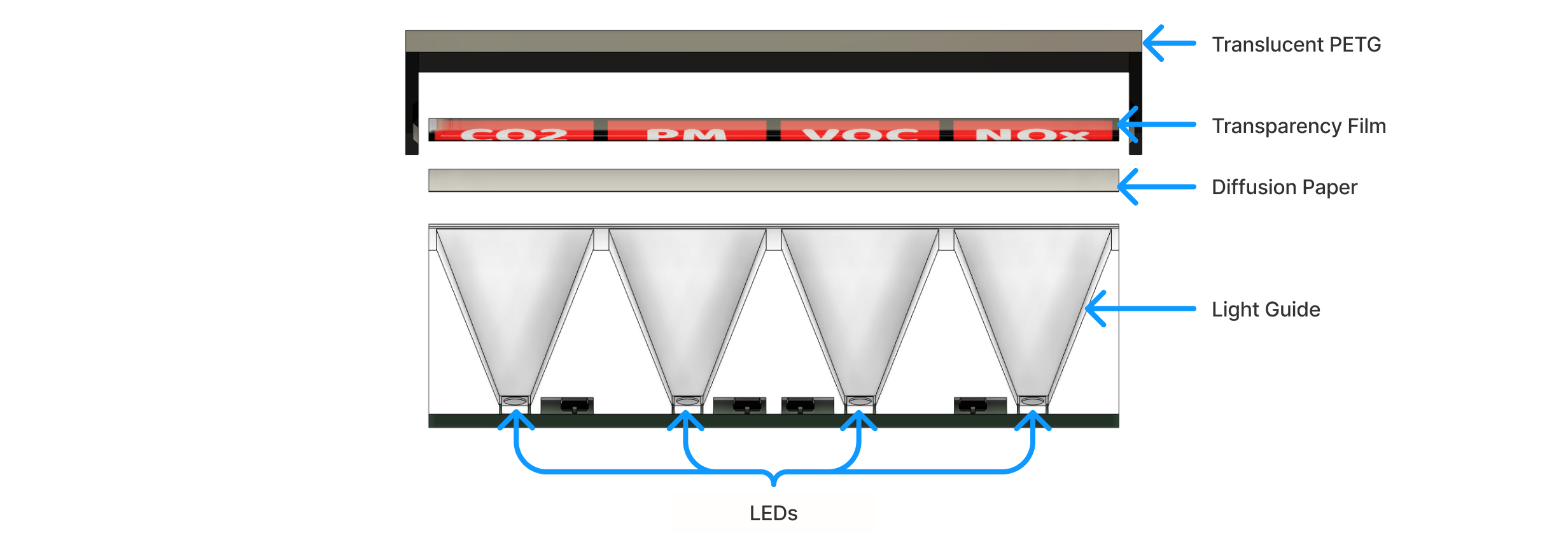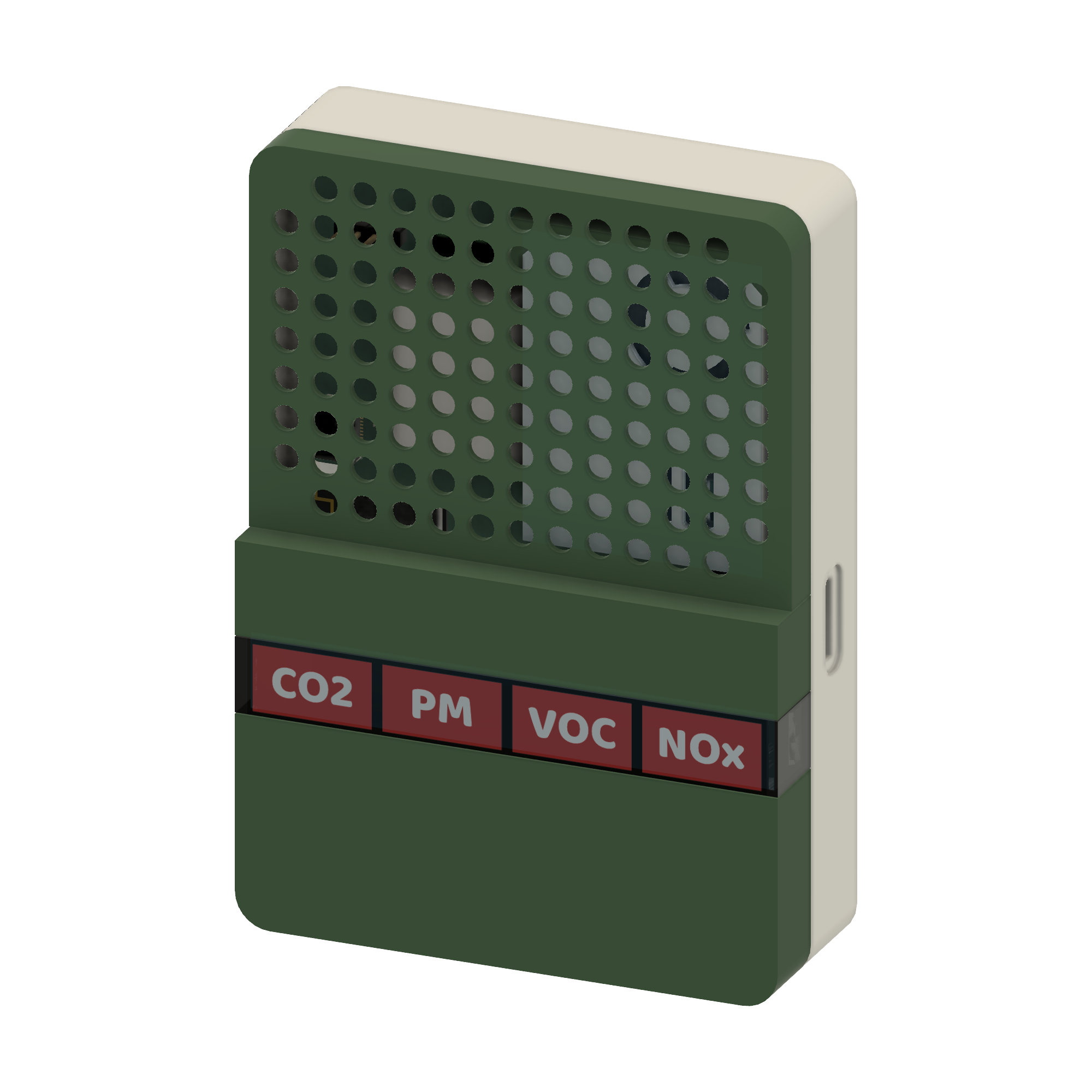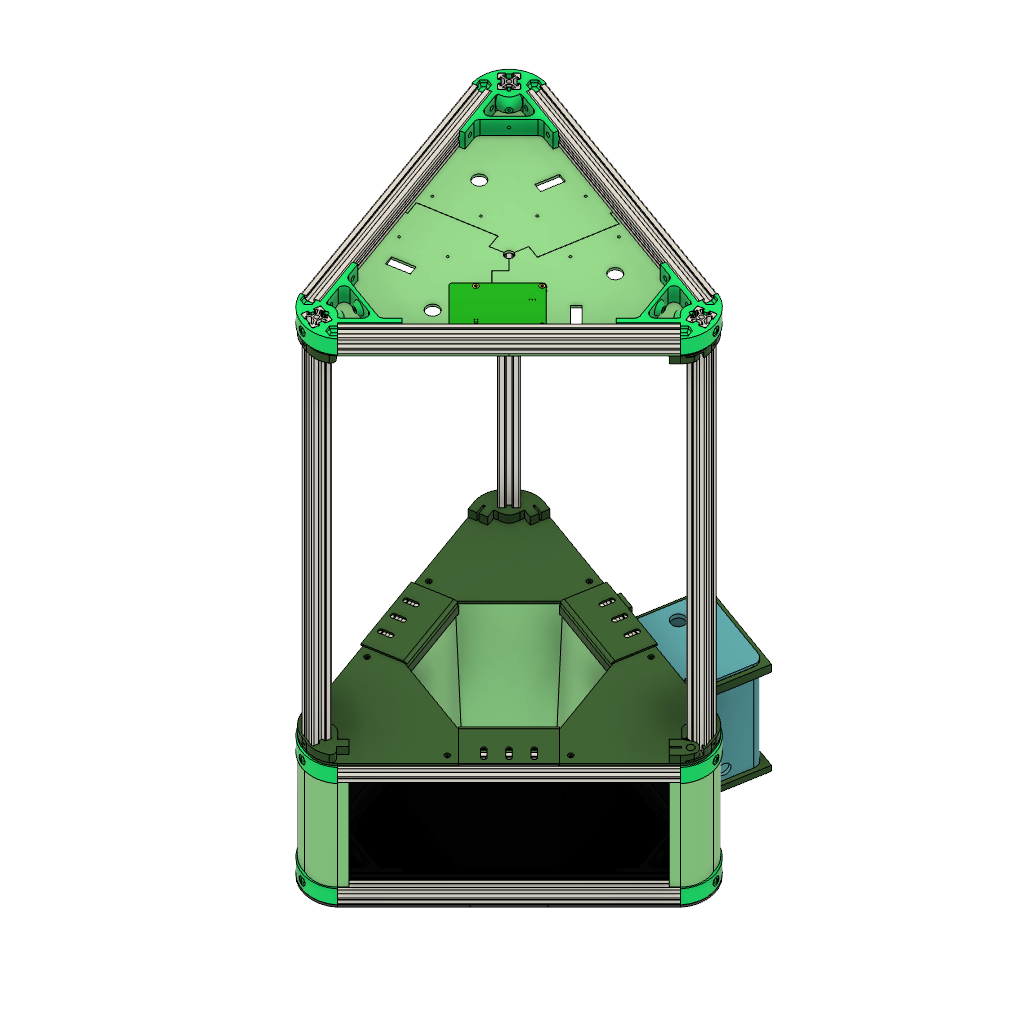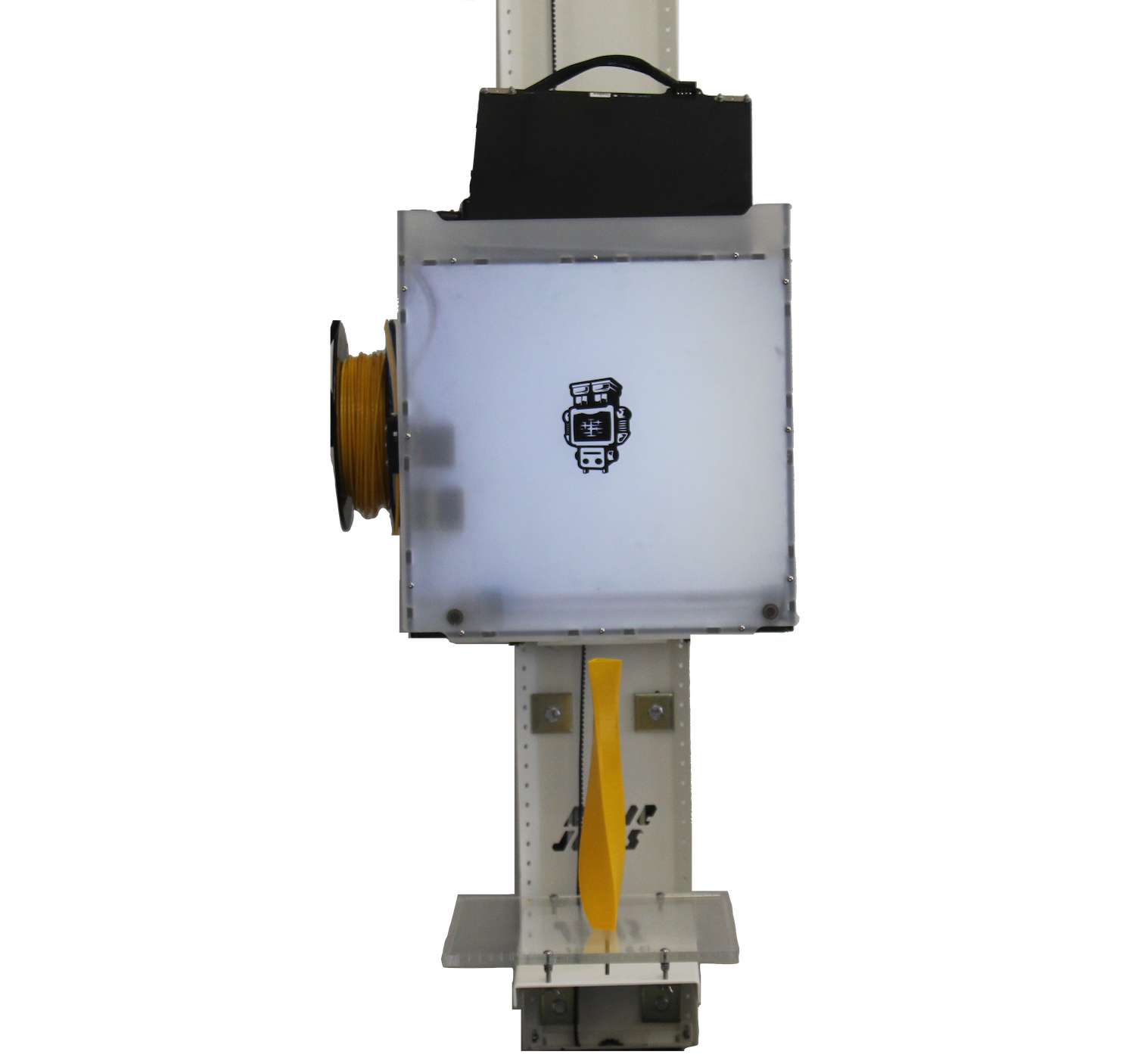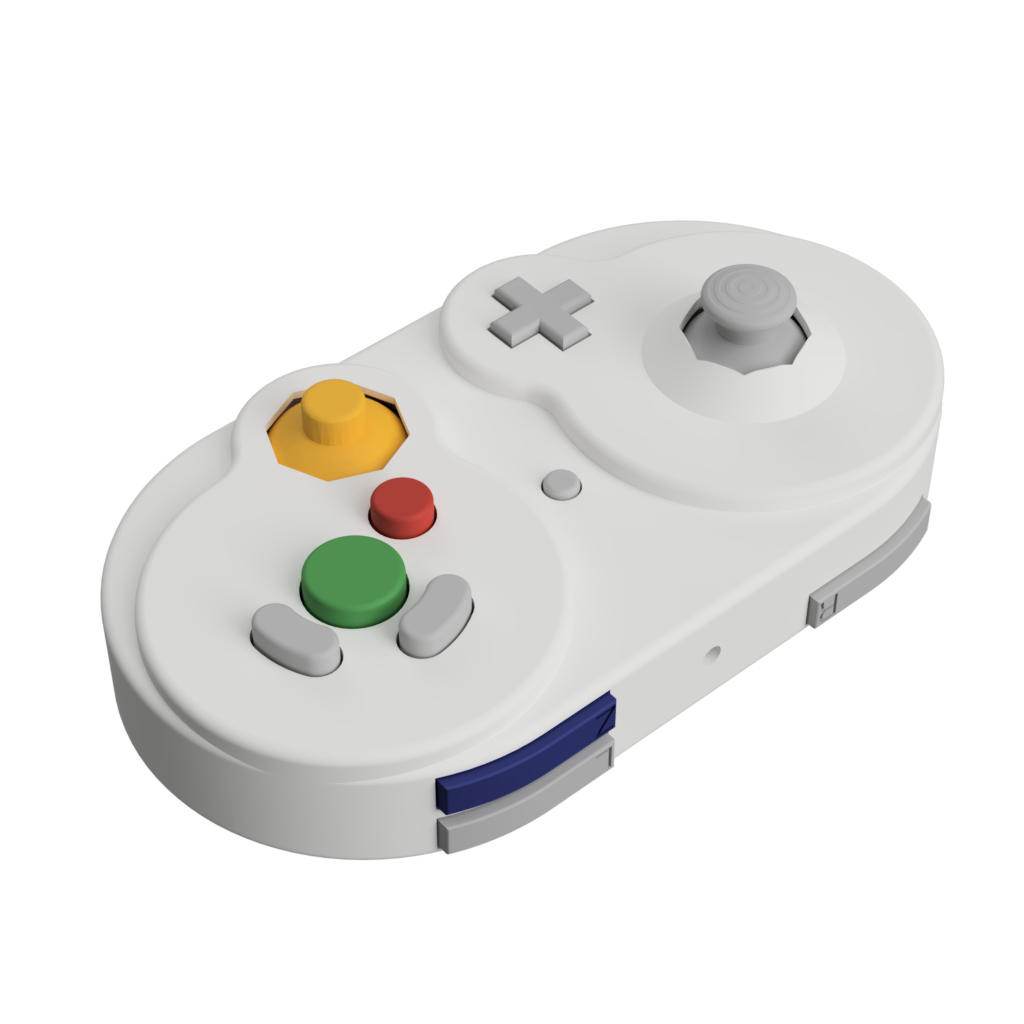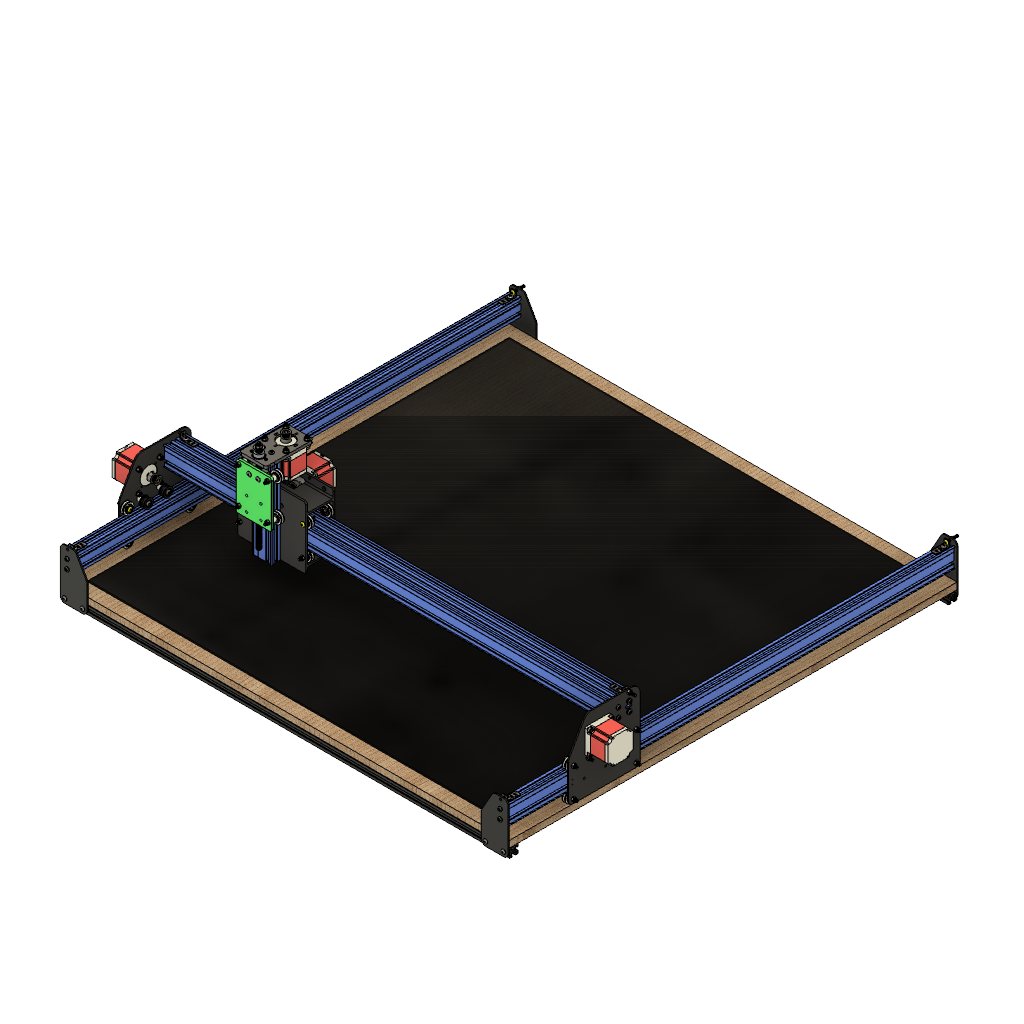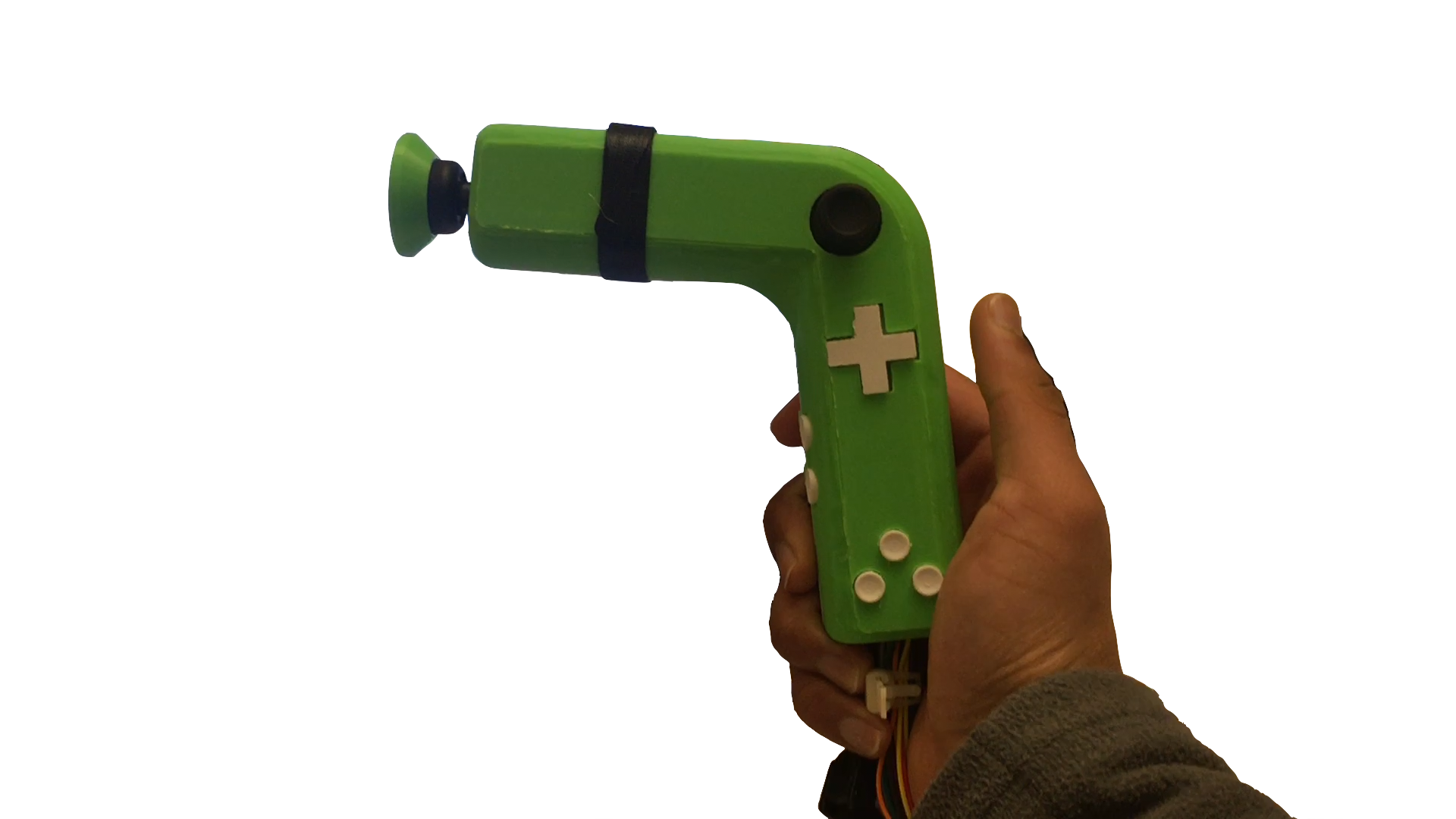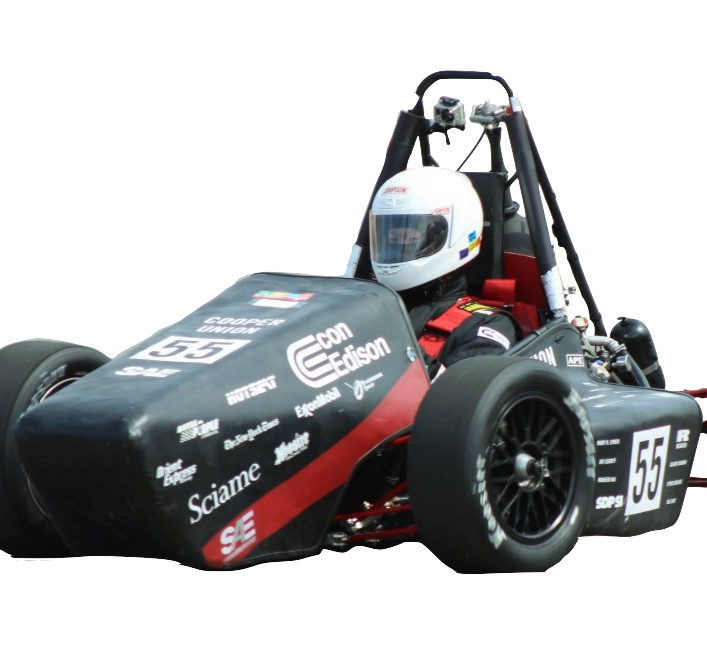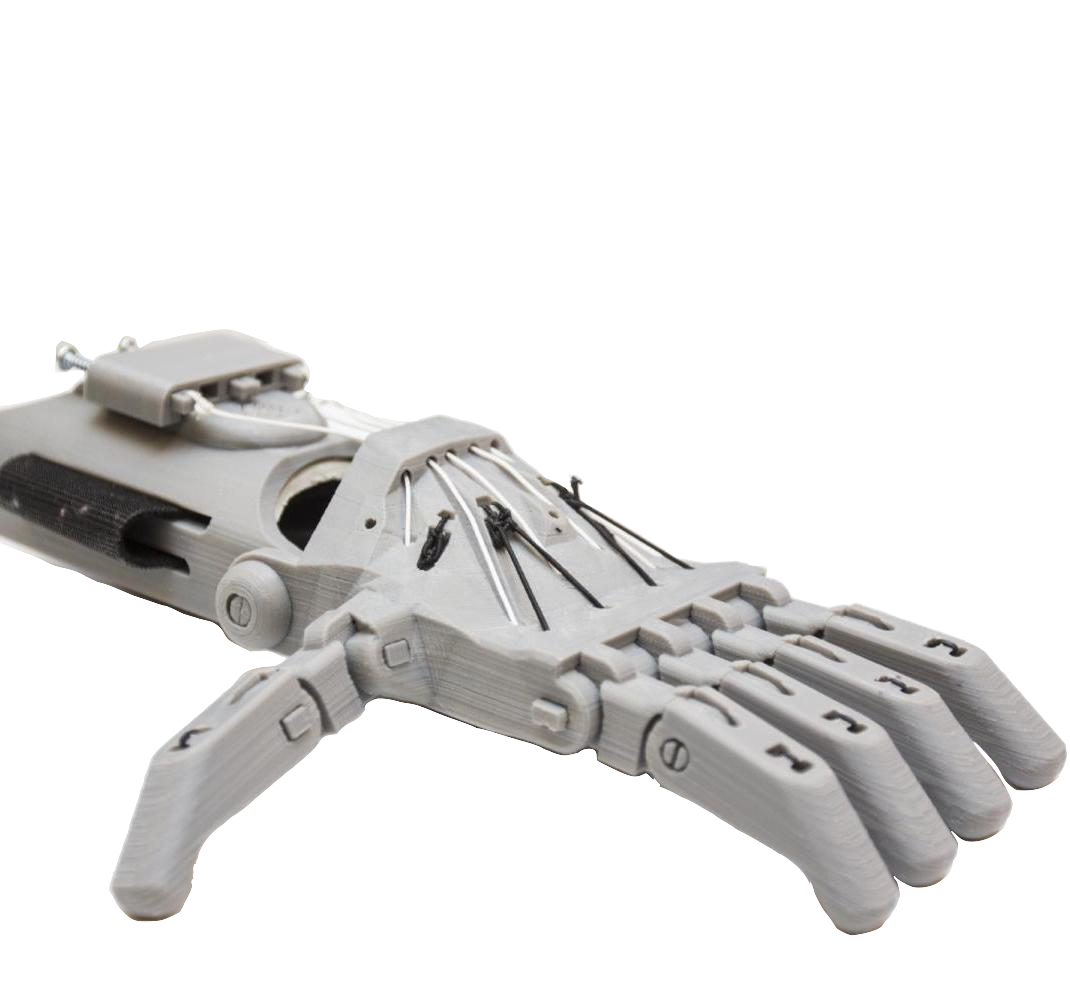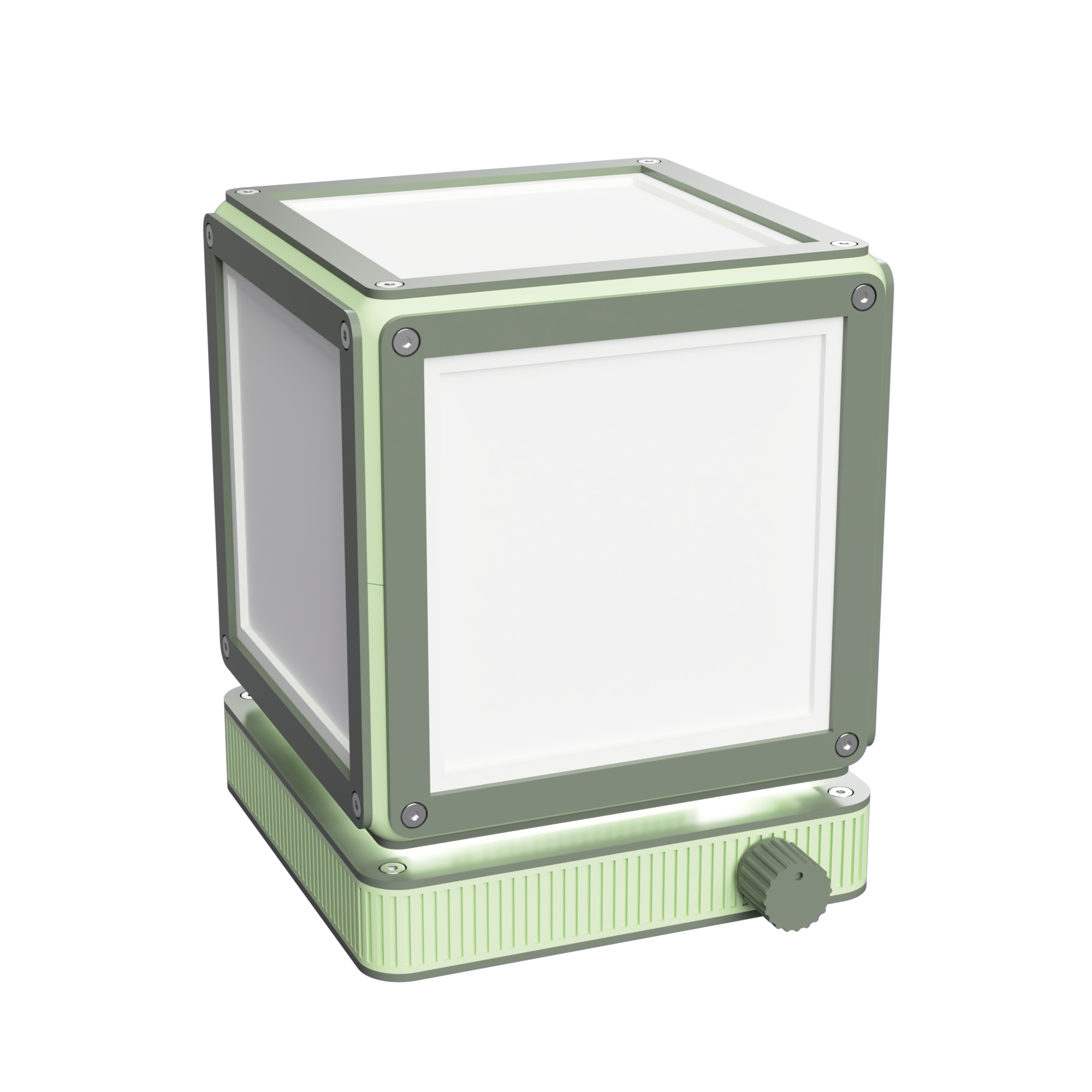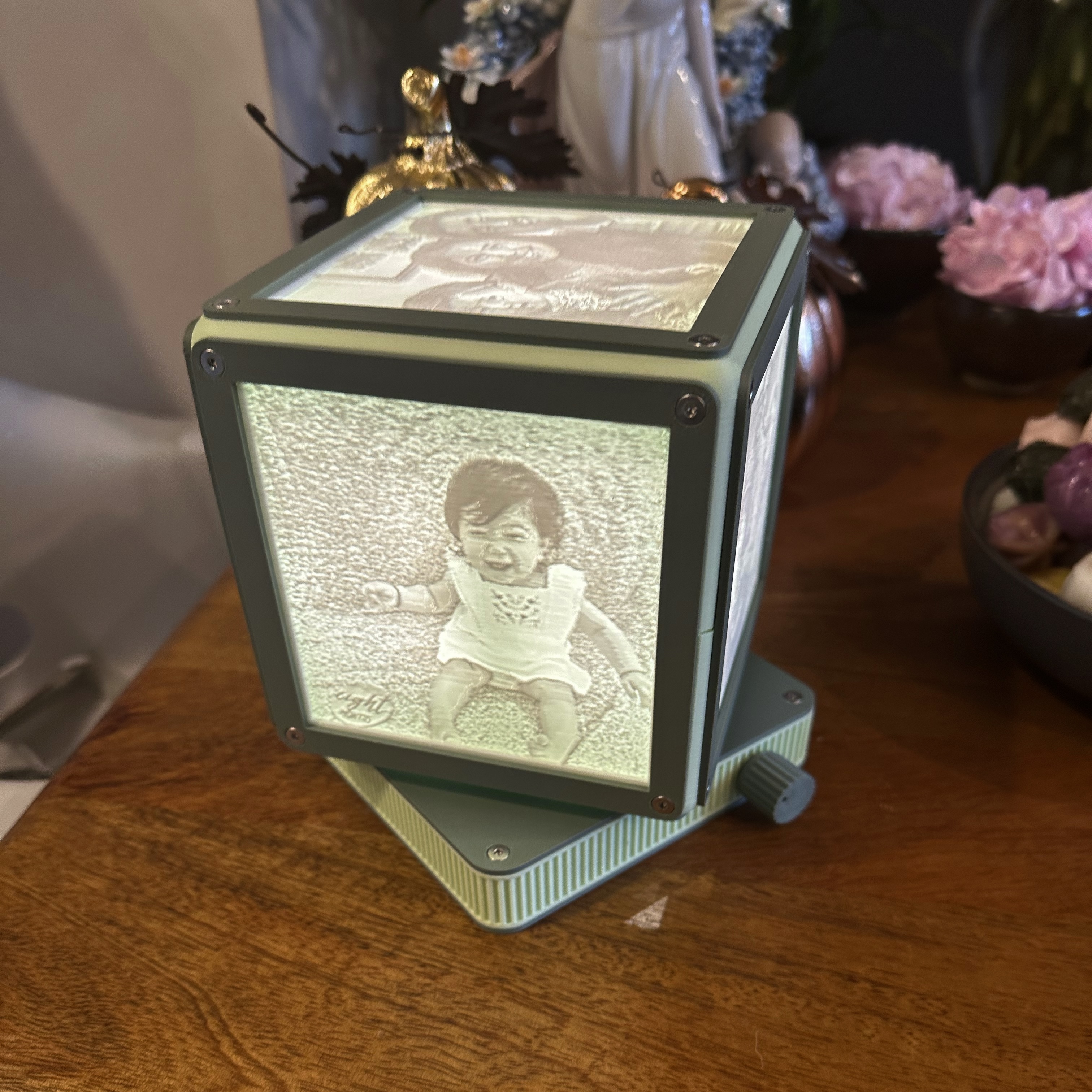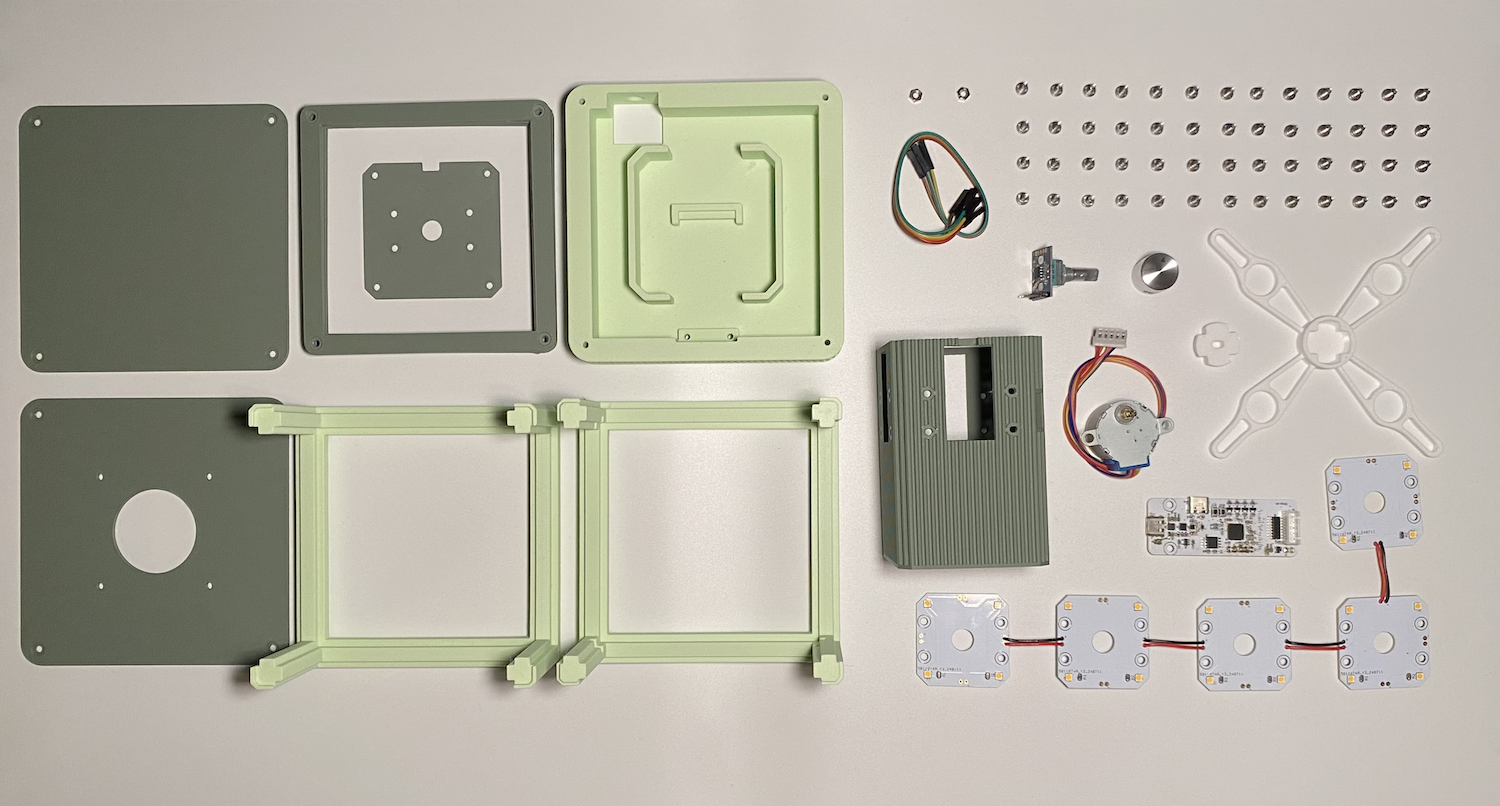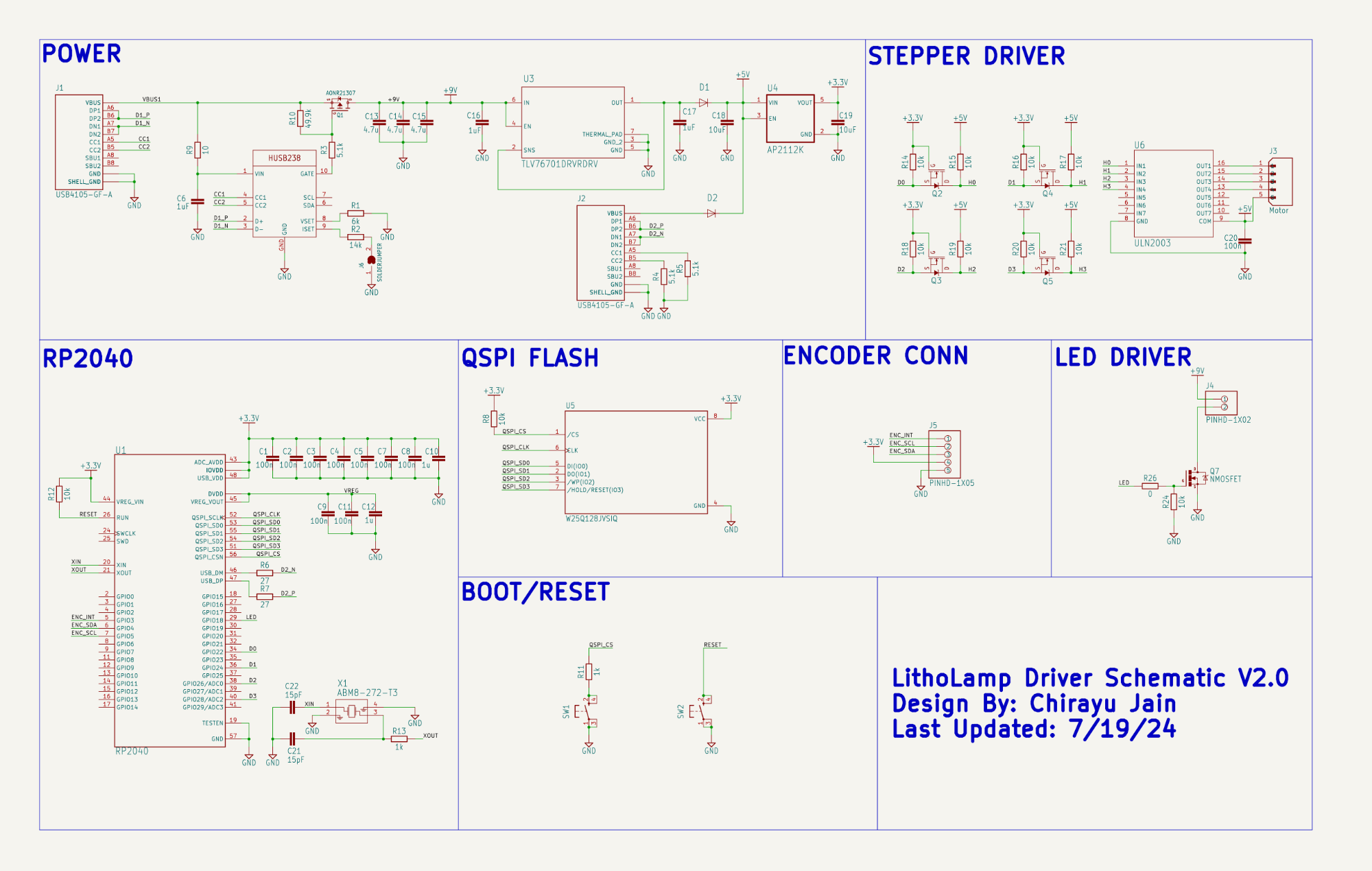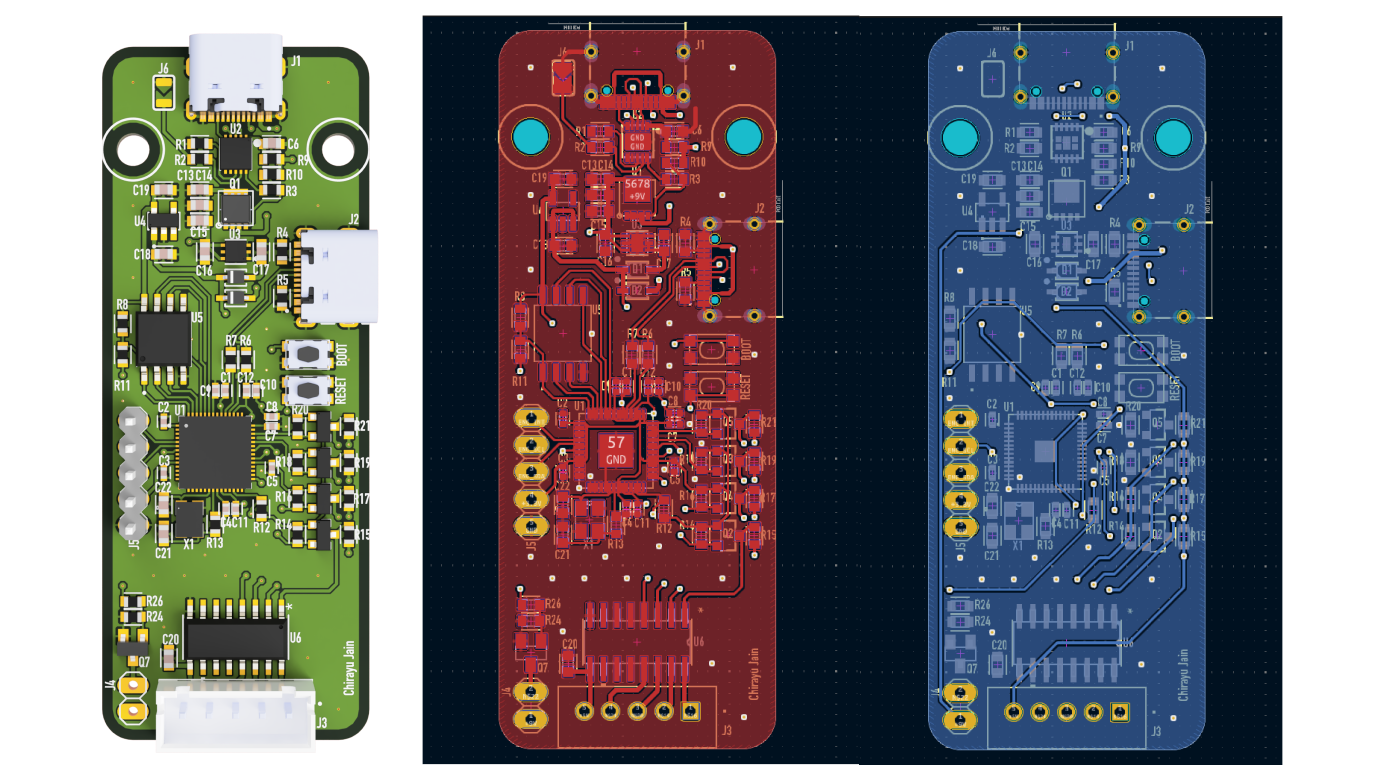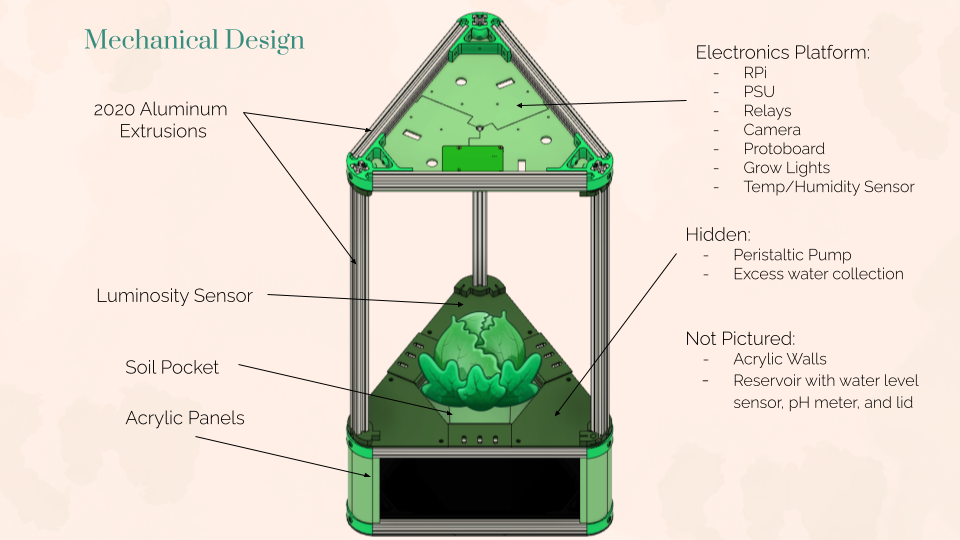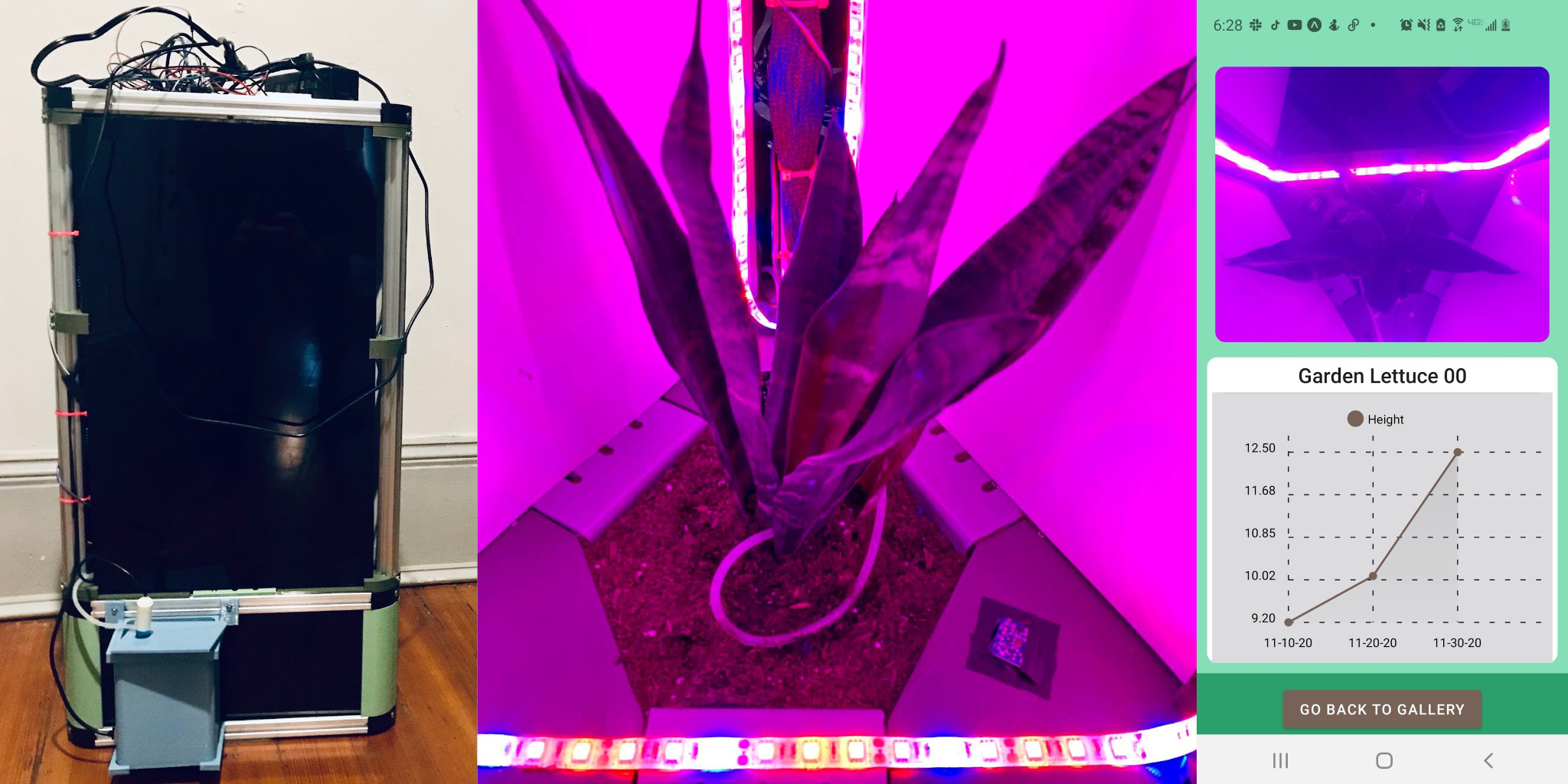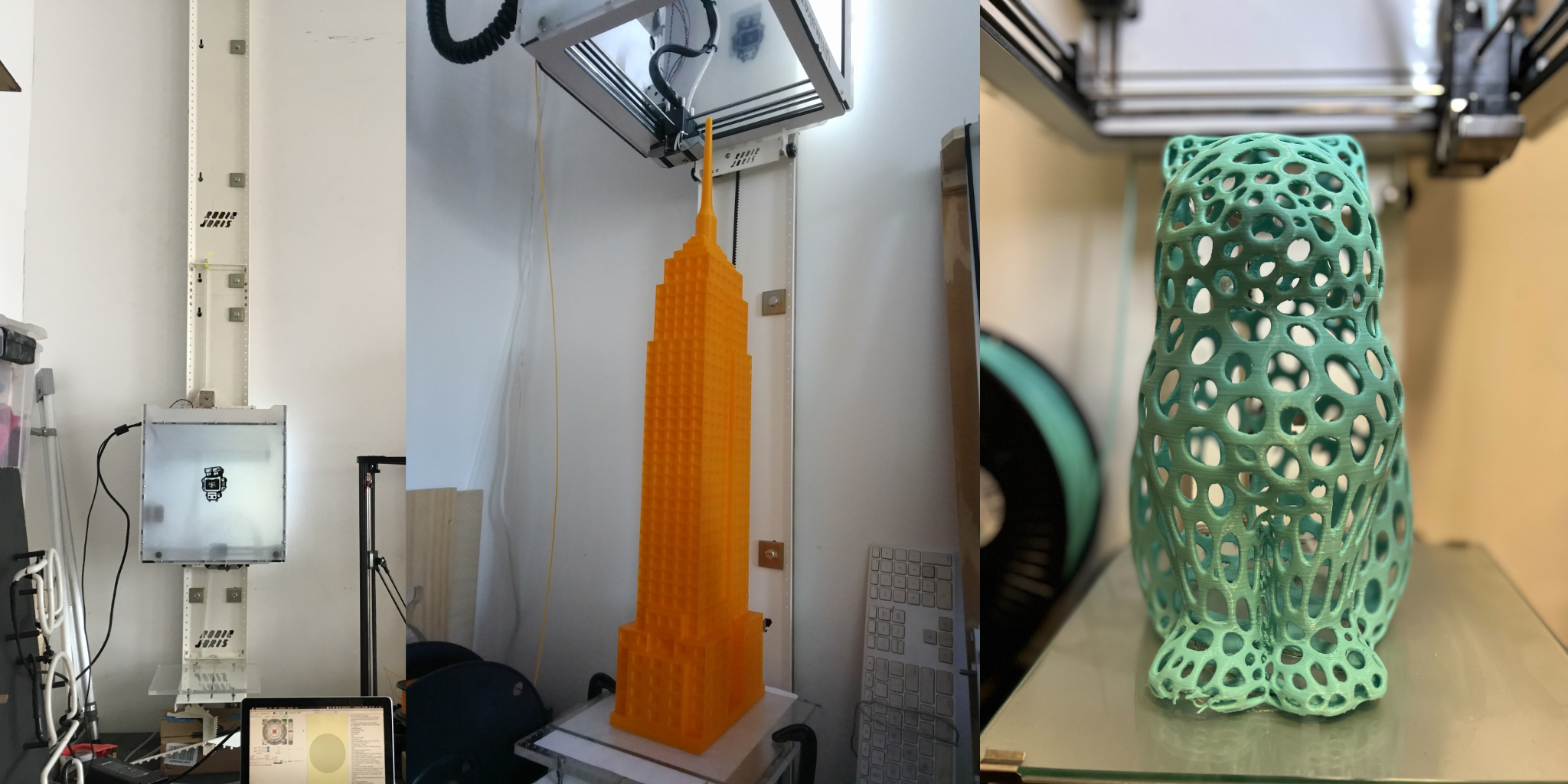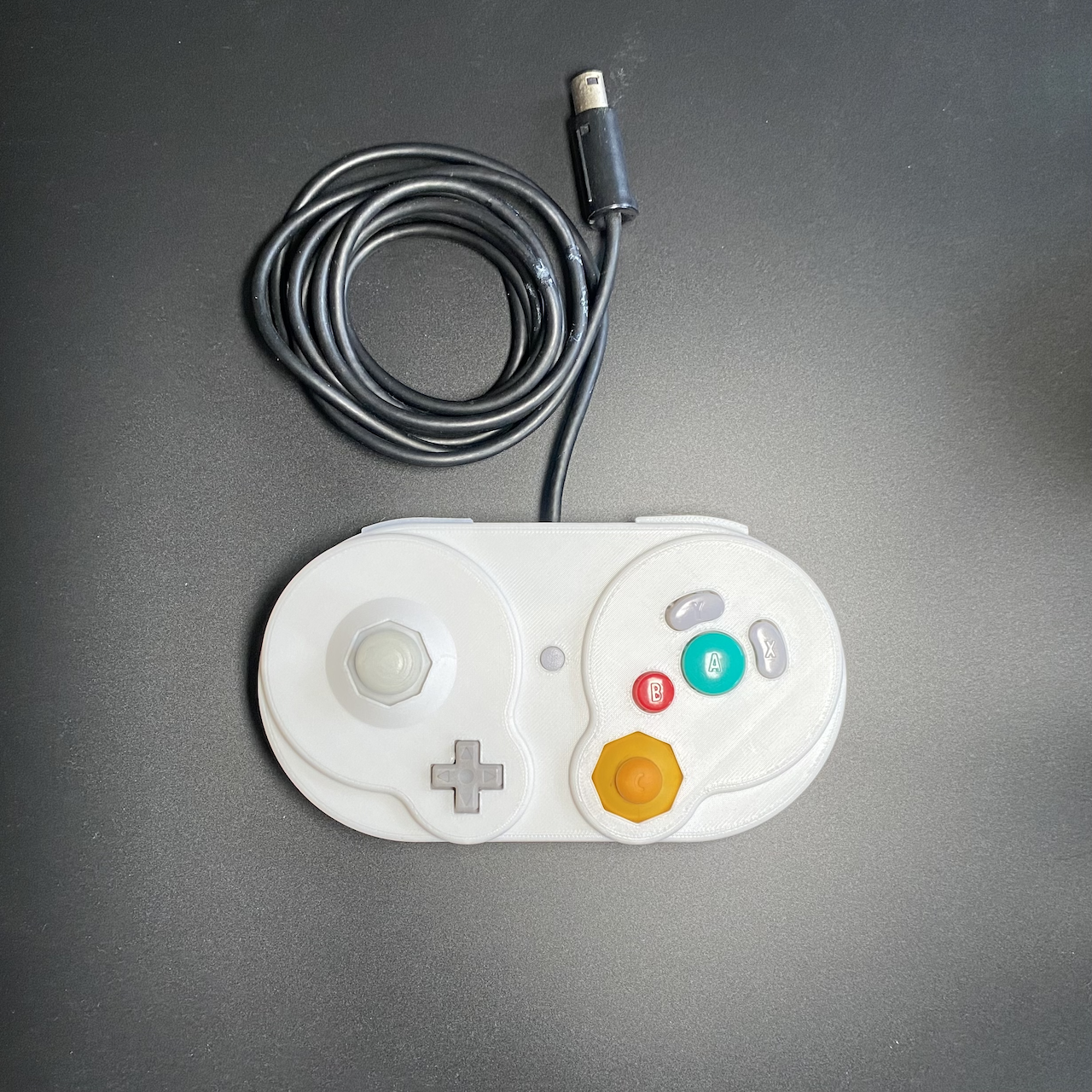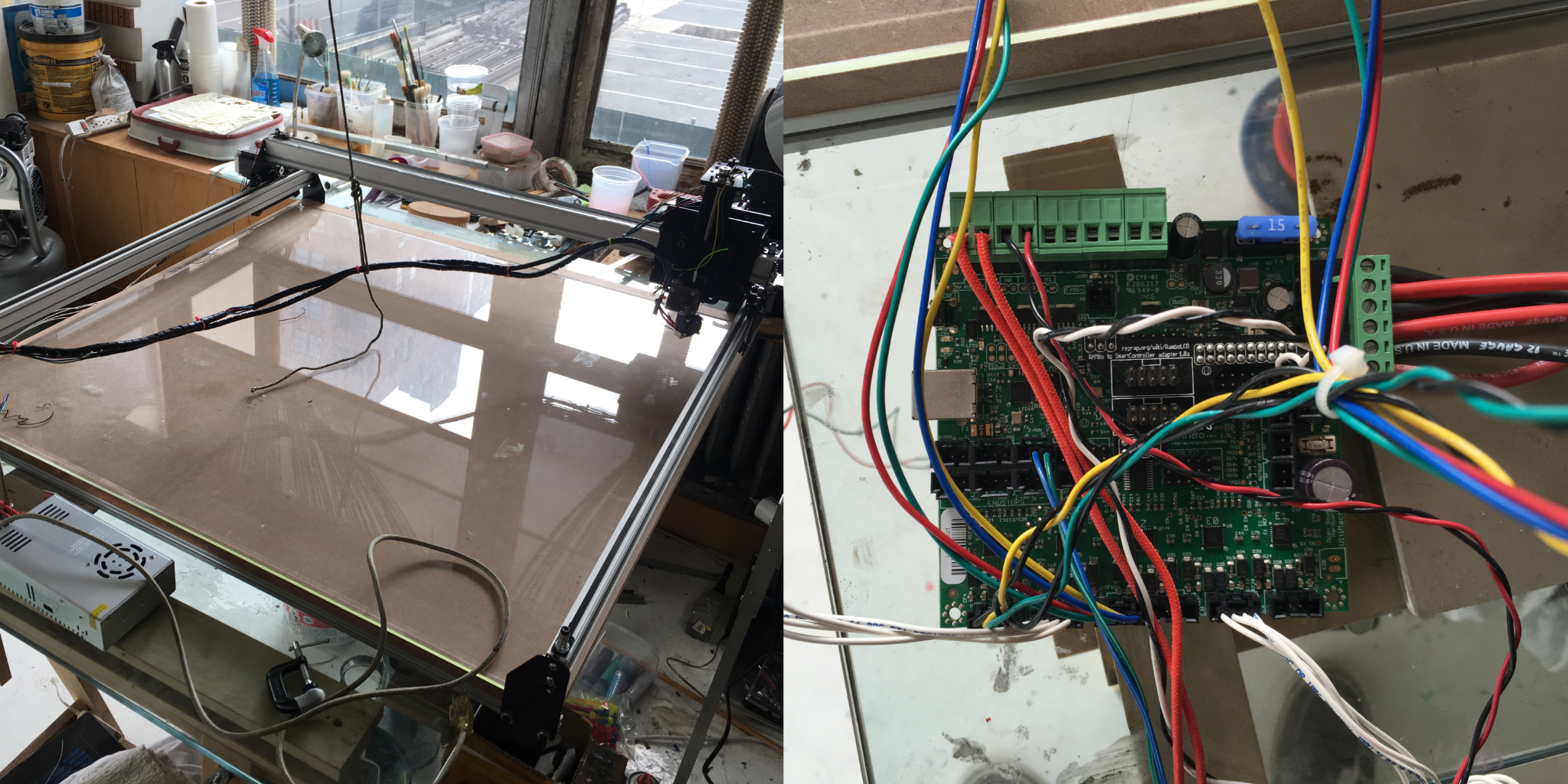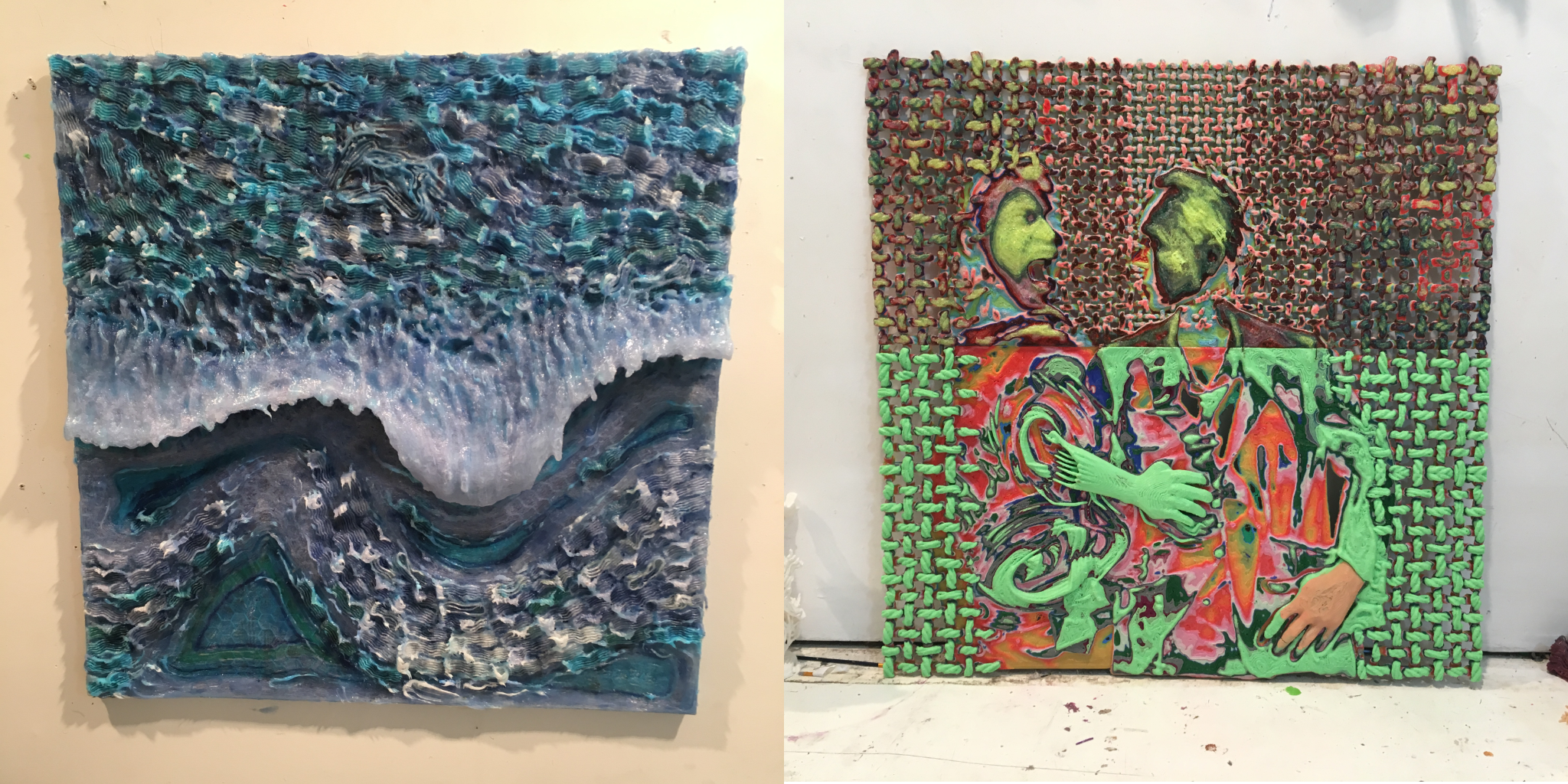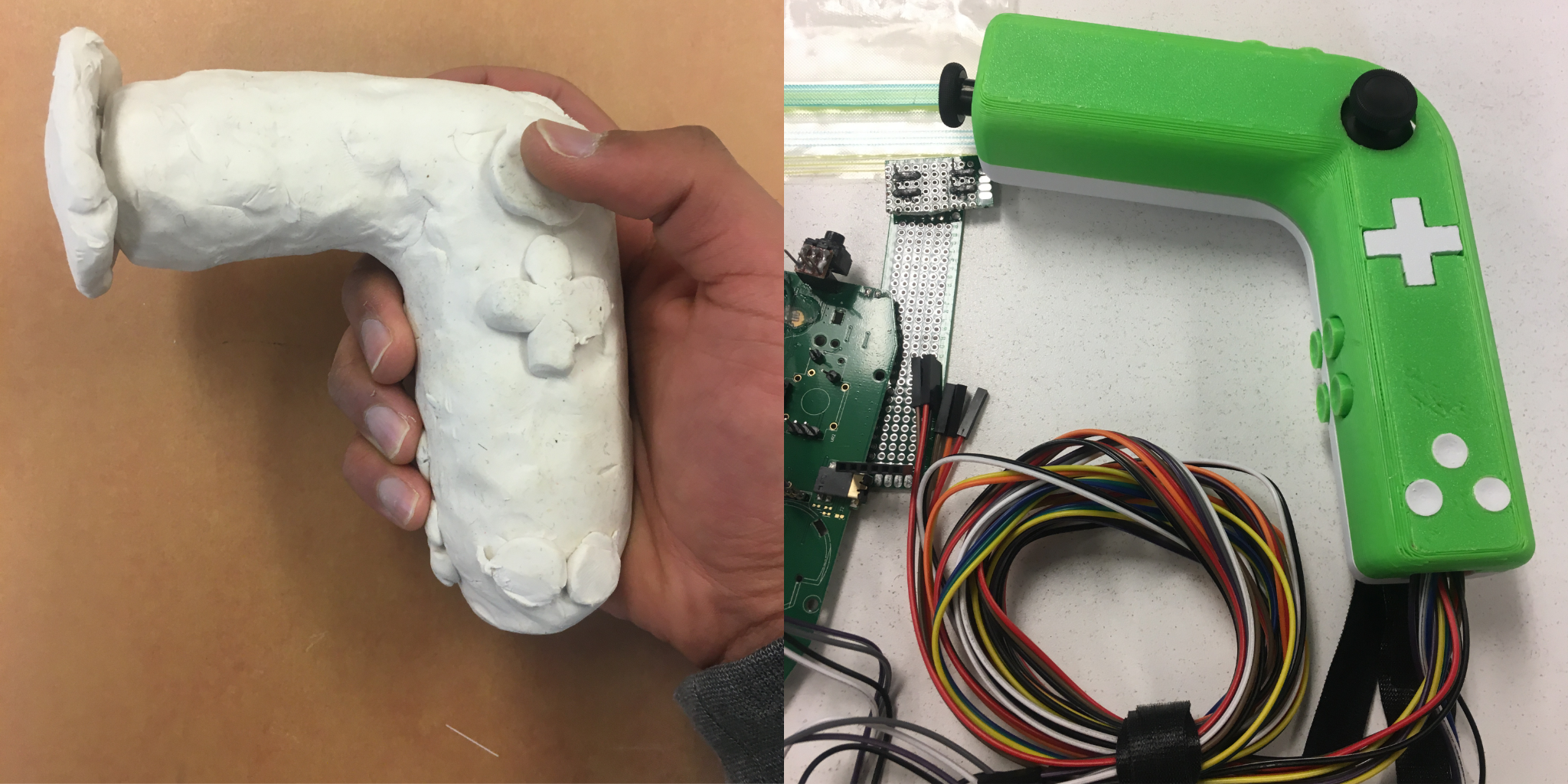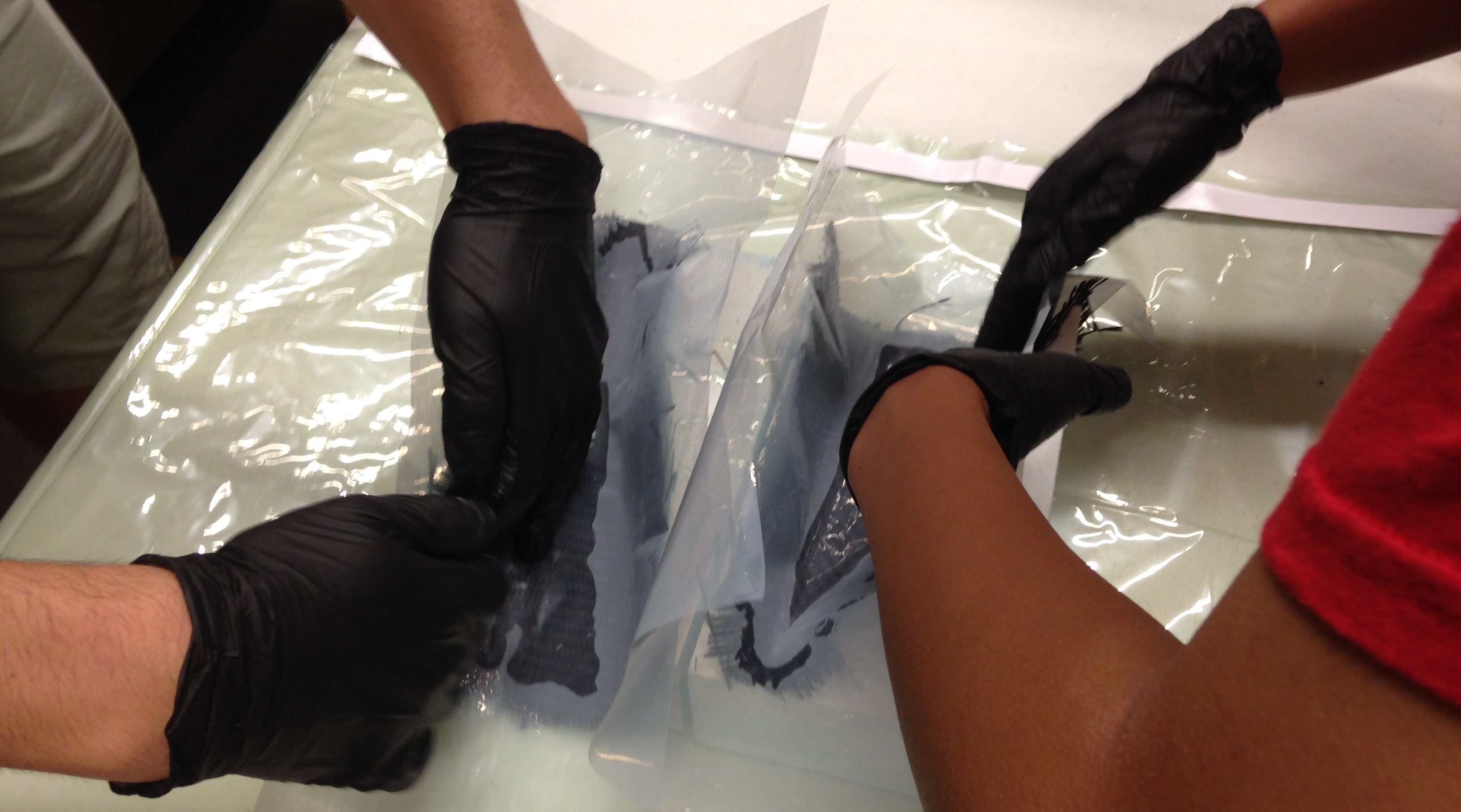Introduction
This is an Open Source Solar Powered Air Quality Monitor. It is designed to
be mounted on the window of your home or office space.
By using a particulate matter sensor, a CO2 sensor, a VOC/NOx gas sensor, and a temperature/Humidity sensor,
you can get an accurate understanding of the air quality in your enclosed space.
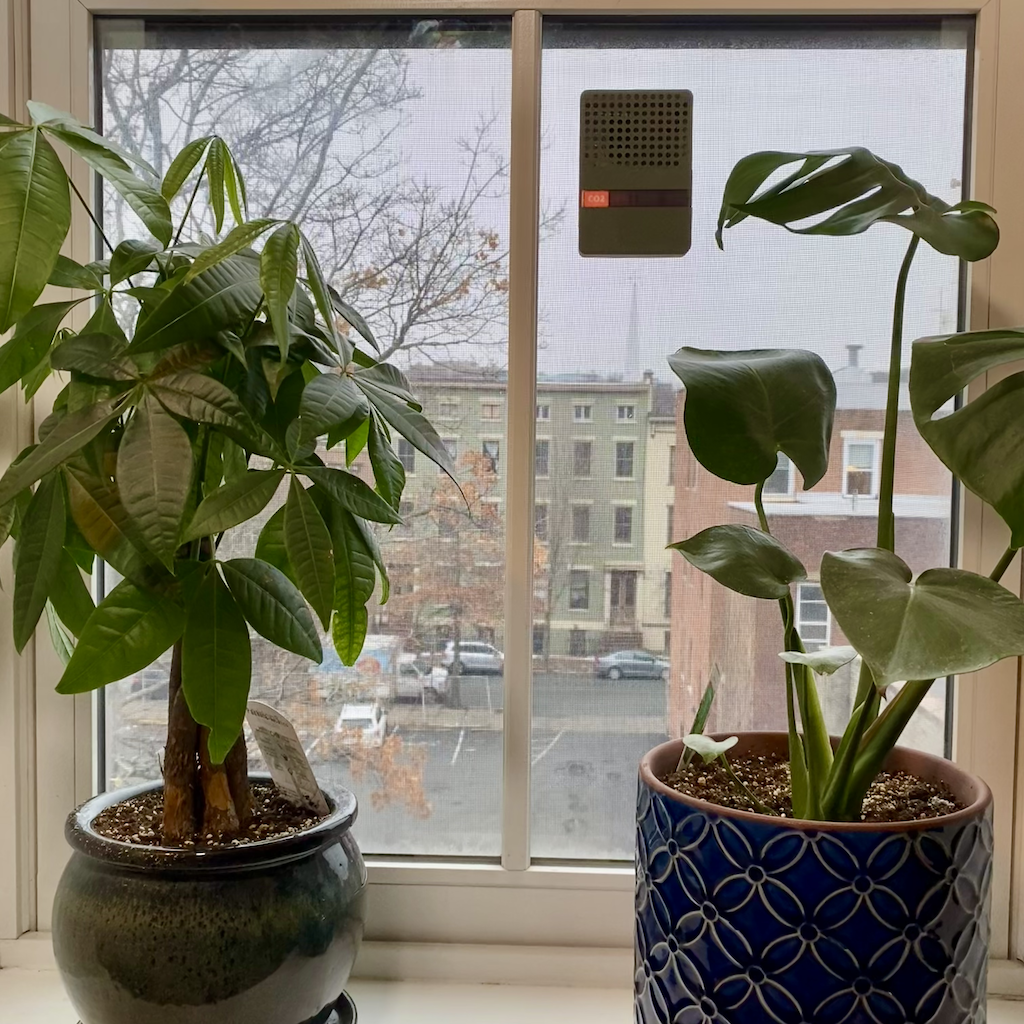
With a high efficiency solar panel and 1 LiPo cell, the AQM can charge up during the day,
and run on battery power overnight ensuring 24/7 monitoring.
If you want to use the AQM in an environment without direct sunlight, you can also power it using a standard USB-C cable.
Historical data is stored locally to a uSD Card.
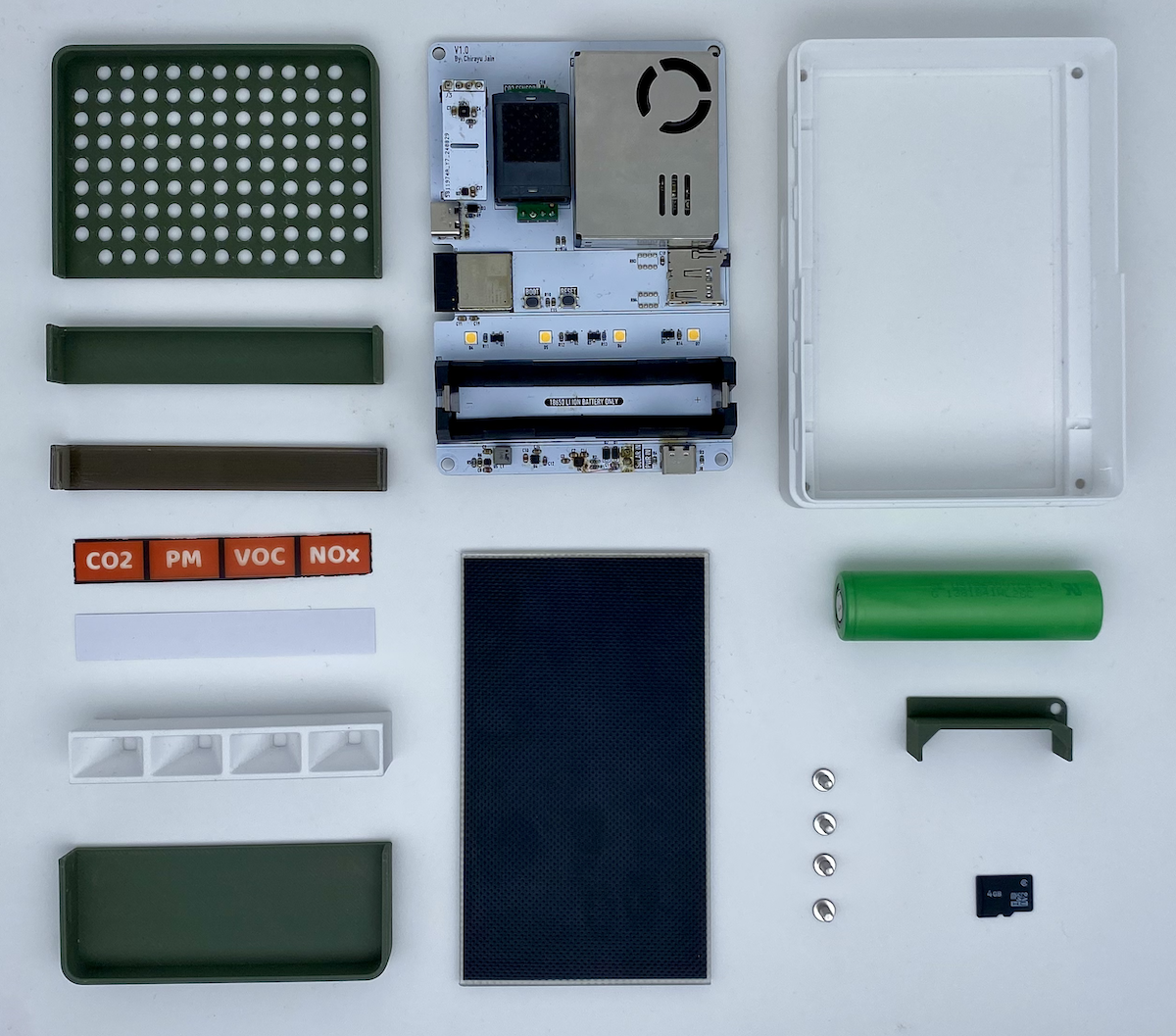
Hardware
- Senseair Sunlight - Low power NDIR based CO2 Sensor
- PMS7003m - Particulate Matter Sensor
- SGP41 - VOC and NOx gas sensor
- SHT45 - Temperature and humidity sensor
- P124 - High Efficiency 1.2W Solar Panel
- ESP32-S3 Mini - Low power microcontroller with Wifi/Bluetooth
- BQ25185 - LiPo charger IC with solar input and load sharing
AQM Schematic
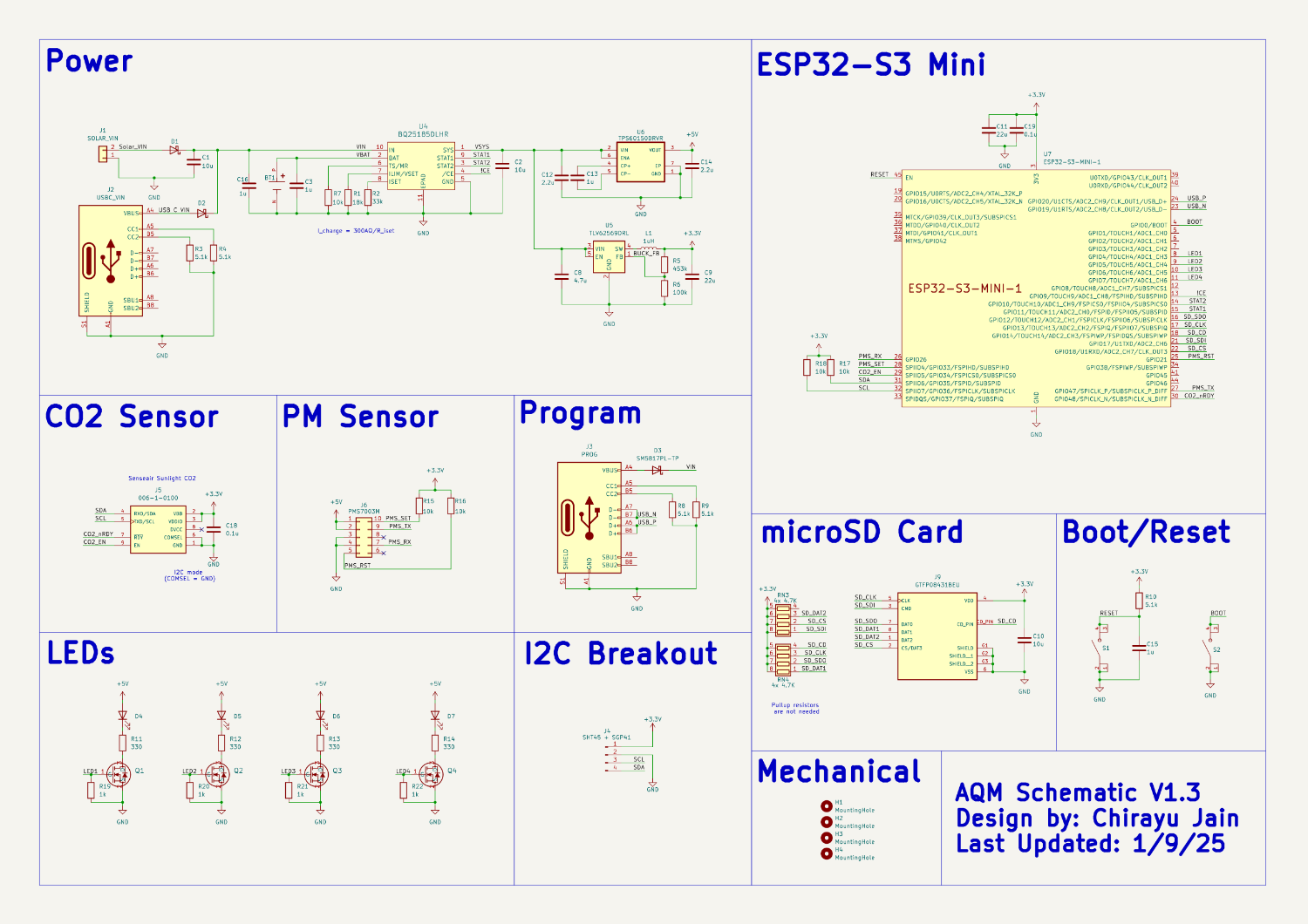
AQM Layout
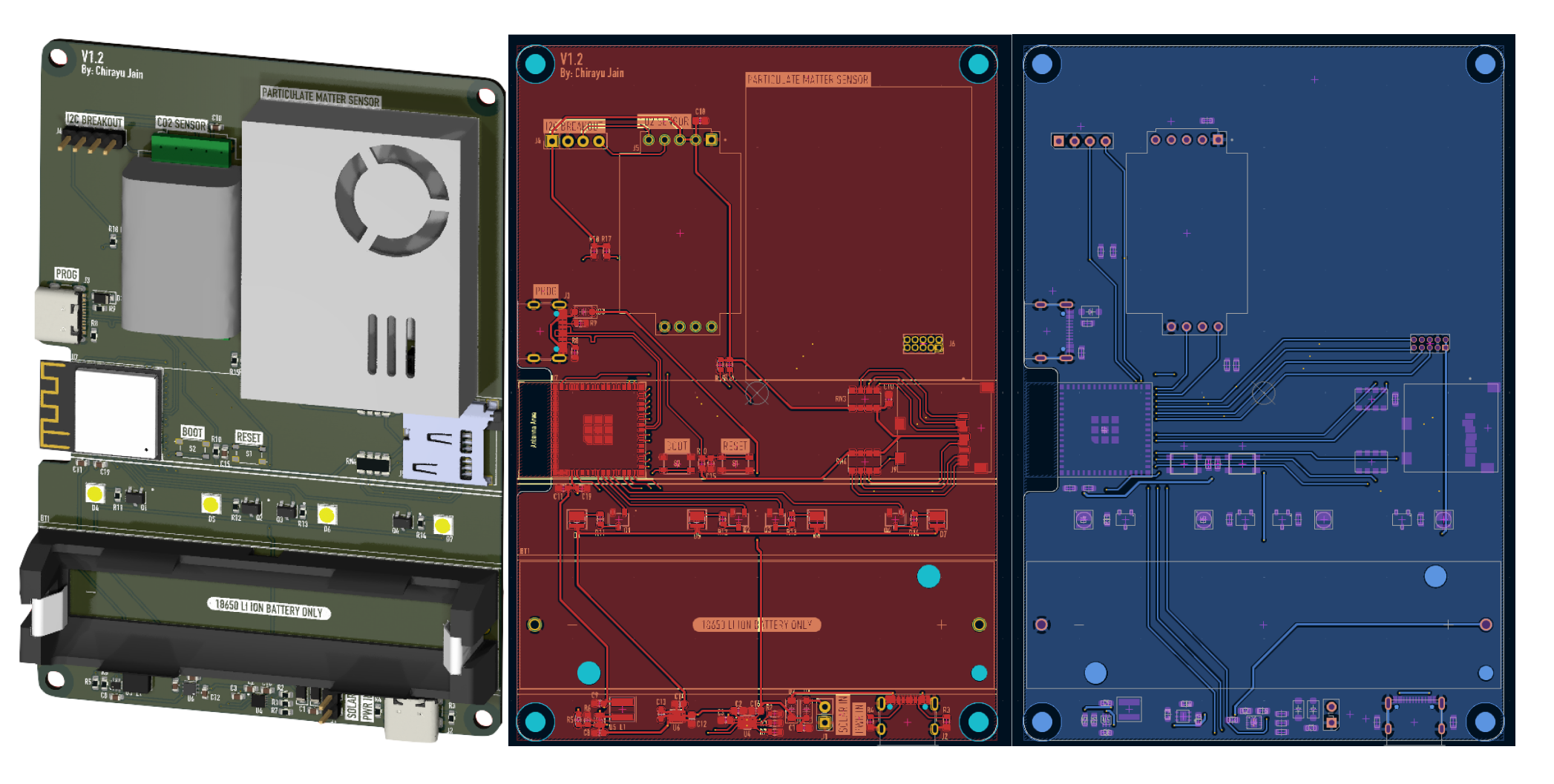
Design
The entire body of the AQM is 3D printed in PETG. The front covers snap in place
and can be printed in different colors to match your space.
I could have added a screen to this AQM that would display exact values from the sensors, but truthfully I did not want
another screen begging for my attention in my own home. The primary function of this AQM is to tell
me when to open the windows in my room. I only need an LED indicator for that.
I decided to build a custom display utilizing icons printed on a sheet of transparency film. The diagram below shows
how this display is assembled. The 3D printed display cover was printed in translucent gray PETG using special settings
to make the 3D print as clear as possible.
